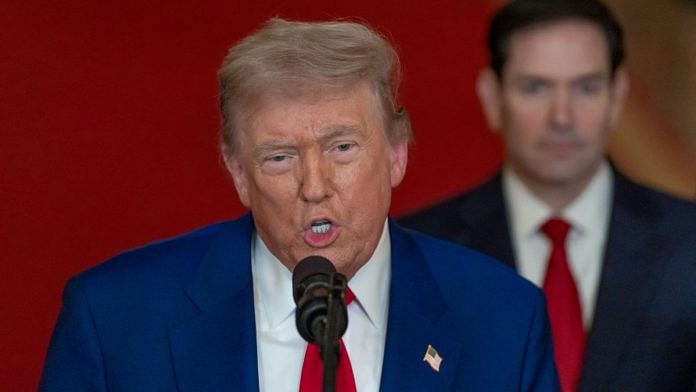From winning the Trump trade war, India is now the US President’s biggest target. The Trump administration imposed a 25 per cent tariff on India. To add insult to injury, Trump announced another 25 per cent tariff, effective tomorrow, on the grounds that India imports crude oil from Russia. Indian goods bound for the US will now face tariff rates similar to China’s if we include the Trump 1.0 tariffs, making any China+1 strategy in India less competitive for US markets, and relative to Southeast countries, which for the most part face tariff rates of about 20 per cent.
Will the additional 25 per cent tariff stick? While Russia’s war with Ukraine isn’t going to end by Wednesday, the secondary Trump tariff is likely temporary. Therefore, the question is not whether India will be able to bring the 50 per cent tariff back down to at least 25 per cent, but when.
Since 2022, India has increased crude oil purchases from Russia to levels exceeding China’s. It sees these imports as key to keeping global oil prices in check and maintaining good relations with Russia, a long-term friend.
Yet despite warmer relations with Russia and hawkish rhetoric from both Washington and New Delhi, India’s path to outward growth lies with the West — namely the EU and the US — rather than BRICS. Currently, India’s annual exports to the US exceed the combined value of its exports to all BRICS countries. Meanwhile, India has a trade deficit of $209 billion with BRICS, half of it with China. In Asia, India has a trade deficit with every country except the Philippines.
If the 50 per cent tariff sticks, India’s Achilles’ heel — its low global market share in labor-intensive manufacturing despite being the world’s most populous country — ironically becomes its blessing. Direct exposure is relatively low, even though the US is its largest trade partner. Shipment to the US totalled $79 billion, or about 2 per cent of GDP. Of this, $45 billion in goods or 1.2 per cent of GDP would be impacted by the 50 per cent tariff, primarily in labor-intensive sectors such as textiles and gemstones.
Also read: India can’t fight Trump tariffs with emotion. Smart talks, sector relief, reforms are key
Opportunities for long-term benefits
In the short-term, this hit is manageable. In response, the government has indicated that it would streamline the goods and services tax (GST) to boost consumption in the upcoming budget. Another 50 basis point rate cut is also on the cards to shore up domestic demand. State banks and the government will likely extend support to affected sectors. S&P’s recent upgrade of India’s long-term sovereign rating to BBB from BBB- reflects improved fiscal governance. But there is no free lunch. Lowering GST and helping ailing sectors will increase financing needs in the short term.
Longer term, expanding and diversifying market access will be key. Negotiations on the India-EU FTA are ongoing, and the India-UK FTA shows that New Delhi is moving, albeit gradually, toward liberalising its traditionally well-protected markets. Sectors such as agriculture, dairy, and much of the auto industry remain shielded. But India knows that generating formal jobs for its 596 million-strong labour force (as of 2023), which is expected to rise to over 720 million by 2040, is key. With only 11 per cent of workers in formal employment, any losses in formal jobs will be keenly felt.
The bigger risk for India is not being able to secure sectoral exemptions for key sectors such as ICT and pharma —or worse, that existing exemptions are rolled back. At such high tariff levels, beyond the short-term hit to economic growth, FDI inflows will also suffer, especially in manufacturing, which has already started to slow. Moreover, like China, India remains a big domestic market, which will continue to attract investment that will serve local demand, but the US tariffs, should they stay, will make India unattractive for future investments that target export to the US market.
Given the risks and the desire to grow formal jobs and trade, the Indian government will push to lower tariffs — it is only a matter of how and when. In the meantime, the silver lining may be that this external stress will spur India to accelerate overdue reforms. Land, labour, and liberalisation are all needed to unleash growth and increase competitiveness, as US tariffs show that India punches below its weight in labor-intensive manufacturing exports.
Trinh Nguyen is a senior economist covering emerging Asia at Natixis. She tweets @Trinhnomics. Views are personal.
(Edited by Aamaan Alam Khan)







At this stage of our development, India needs foreign capital. Both FDI and FPI. An insightful column by Shri Aakash Prakash for Business Standard. FPI has been essentially absent for the last five years. The proportion of foreign ownership of Indian stocks at a 15 year low.